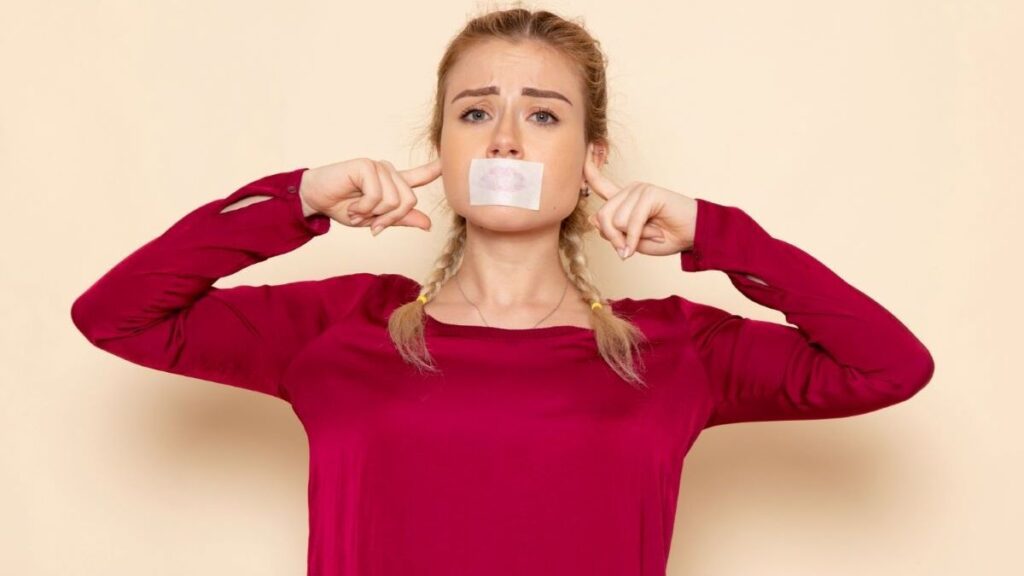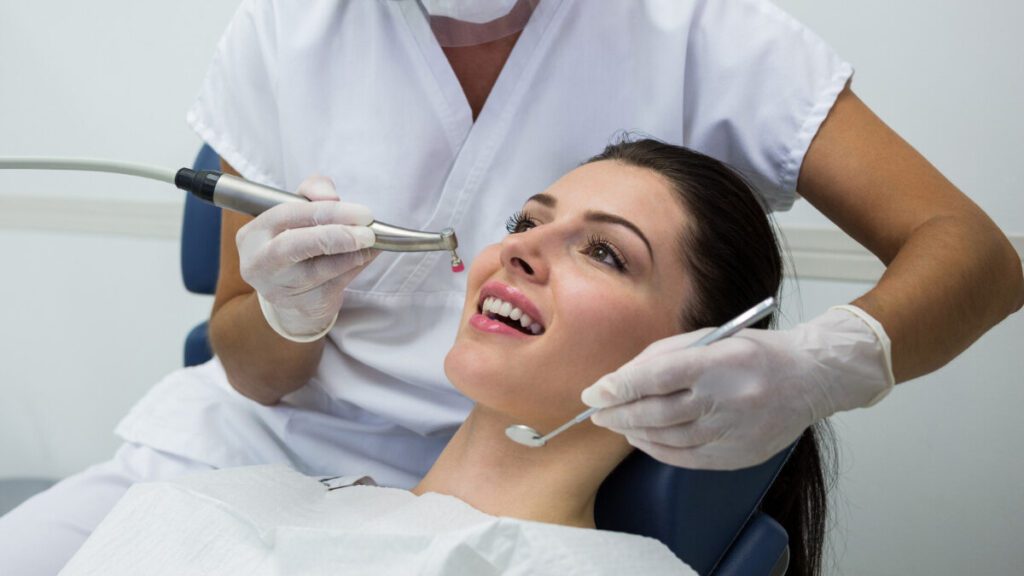Introduction
Let’s face it—everyone is desperate for a good night’s sleep. That’s probably why you’ve seen TikTok videos or health blogs raving about a strange trend called mouth taping. It sounds odd, even a bit risky, but the concept is simple: tape your mouth shut before bed to force yourself to breathe through your nose. This is supposed to make your sleep deeper, reduce snoring, and even help with dry mouth or bad breath.
- Introduction
- What is Mouth Taping?
- How Mouth Taping is Supposed to Help
- The Scientific Angle: Does Mouth Taping Work?
- The Dark Side of Mouth Taping
- Risk #1: Obstructive Sleep Apnea Complications
- Risk #2: Anxiety and Panic Disorders
- Risk #3: Skin Irritation and Rashes
- Who Should Never Try Mouth Taping
- What Experts Say About Mouth Taping
- Safe Alternatives to Mouth Taping
- Step-by-Step: How to Improve Sleep Without Mouth Taping
- Conclusion
But here’s the problem—what looks like a miracle solution at first glance might be a trap for deeper issues. Imagine waking up gasping for air, dealing with sudden skin reactions, or discovering it made your sleep apnea worse. That’s the dark side of mouth taping that few people are talking about. The hidden risks that lurk beneath this popular sleep aid will be exposed in this essay. So, before you reach for that tape, let’s walk through everything you really need to know.
What is Mouth Taping?
To keep your mouth closed while you sleep, mouth taping involves applying a strip of skin-safe tape to your lips before bed. The idea is to encourage nasal breathing, which is considered healthier than mouth breathing for various reasons. On the surface, this sounds harmless or helpful. After all, we’re taught that nasal breathing is more efficient, filters air better, and helps oxygen reach the lungs properly.
The trend gained momentum thanks to influencers and self-proclaimed wellness gurus. They swear by it. You’ve probably seen before-and-after comparisons, enthusiastic testimonials, or links to “the best mouth tape you can buy right now.” But rarely do these posts mention side effects or situations where mouth taping can go horribly wrong.
It’s become one of those internet wellness trends—like charcoal detoxes or juice cleanses—that look great on a Reel but can have unintended consequences. The problem is, most people trying mouth taping don’t fully understand the science (or the lack thereof) behind it, nor do they realize they might be putting themselves at serious risk. That’s why getting the facts straight is more important than ever.
How Mouth Taping is Supposed to Help
Supporters of mouth taping claim a wide range of benefits. According to them, nasal breathing improves oxygen absorption, boosts nitric oxide production, and lowers your chances of snoring or waking up with a dry mouth. The theory is that our mouths were never meant to be our primary breathing tool during rest—our noses are built with tiny hairs and mucus membranes to purify air before it reaches the lungs.
Some people also say that mouth taping helps them sleep more deeply, wake up feeling refreshed, and even improve their oral health. Anecdotal stories include reduced bad breath, better hydration, and fewer instances of waking up in the middle of the night. It’s no wonder the idea has become popular among biohackers and sleep enthusiasts.
Here’s an anecdote that might change your mind. Jake, a 35-year-old dad of two, tried mouth taping after hearing about it on a podcast. The first few nights were okay. Then, he woke up in a full-blown panic attack. He had been unknowingly struggling with nighttime nasal congestion, and the tape had forced him into a claustrophobic breathing situation. One ER visit later, he vowed never to try it again.
Sure, nasal breathing is ideal. But is mouth taping the best way to achieve it? That’s where the debate starts to heat up.
The Scientific Angle: Does Mouth Taping Work?
The truth? There isn’t a ton of solid scientific evidence supporting mouth taping as a cure-all for sleep issues. Yes, nasal breathing has many proven benefits. But that doesn’t mean taping your mouth is the safest or most effective way to get there.
Most of the studies you’ll find are either small, observational or focus more on general nasal breathing than the practice of actually taping the mouth shut. A few suggest mild improvements in snoring for people without underlying medical conditions. Sleep researchers advise against making snap judgments, though.
One major issue is that mouth taping doesn’t take individual health conditions into account. If you have allergies, nasal polyps, a deviated septum, or even mild sinus congestion, forcing yourself to breathe only through your nose can cause major problems. There’s also concern among medical professionals about people self-diagnosing and using this technique without proper evaluation.
In short, while the benefits of nasal breathing are real, mouth taping isn’t a one-size-fits-all solution, and the risks might outweigh the rewards if you’re not careful.
The Dark Side of Mouth Taping
Let’s get to the part most influencers skip. While mouth taping sounds simple, it can open a Pandora’s box of problems for some people. Your body is not meant to breathe through one channel at all times, especially if something’s blocking that path. For many, the danger begins with mild discomfort and ends with serious health complications.
We’re talking about worsening obstructive sleep apnea, panic attacks, allergic reactions, and skin issues. Some people have even ended up in emergency rooms after trying mouth taping without knowing they had undiagnosed breathing problems.
Even worse? The culture of online wellness often pressures people to ignore discomfort and “stick with it.” That’s a dangerous mindset when it comes to something as vital as breathing. If your body is fighting a method meant to help it, that’s not a “healing crisis.” That’s a red flag.
Now, let’s dive deeper into the specific dangers and see how they play out in real life.
Risk #1: Obstructive Sleep Apnea Complications
One of the biggest dangers of mouth taping is how it can silently worsen obstructive sleep apnea (OSA)—a serious sleep disorder that many people don’t even know they have. OSA happens when your throat muscles relax too much during sleep, causing your airway to become blocked. When that happens, your brain jolts you awake to reopen the airway. You may not remember waking, but this disruption can happen hundreds of times each night.
Imagine now what would happen if you taped your mouth shut. If you’re someone with undiagnosed sleep apnea and your nose becomes even slightly congested, you’ve just eliminated your body’s natural backup breathing method—your mouth. That’s not just uncomfortable; it can be dangerous. You might wake up gasping for air or, in more extreme cases, not wake up in time to breathe normally again.
Consider Emily, a 42-year-old software developer. She believed that mouth taping would improve her sleep quality and help her stop snoring. But after three weeks of trying it, she began waking up in a cold sweat, heart pounding, feeling like she had been underwater. It turns out she had mild sleep apnea that was made worse by her inability to open her mouth during sleep. Her doctor was stunned that she had tried the method without any medical screening.
The problem with mouth taping is that it creates a forced breathing scenario—something that goes against the natural safety mechanisms our body uses while sleeping. For people with breathing disorders, this practice can be downright dangerous. And since sleep apnea can often go undiagnosed for years, many people don’t even realize they’re putting themselves at risk.
Risk #2: Anxiety and Panic Disorders
Mental health is another huge consideration when it comes to mouth taping. For people with anxiety, claustrophobia, or a history of panic attacks, the sensation of having your mouth taped shut can trigger intense psychological distress.
The feeling of being physically restrained—even if it’s self-imposed—can send someone with anxiety into fight-or-flight mode. During sleep, this can result in vivid nightmares, night terrors, or waking up in a panic, with the heart racing with shallow breathing. While most wellness trends focus only on physical outcomes, mental well-being is just as important.
For instance, Laura, a 38-year-old yoga teacher with mild anxiety, gave mouth taping a try after seeing it recommended in a wellness group. The first night, she felt a little uncomfortable but pushed through. The second night, she woke up in full-blown panic, heart thumping, hyperventilating, convinced she was suffocating. She ended up tearing the tape off in terror and didn’t sleep the rest of the night.
It’s not just about the physical act—it’s the psychological impact of knowing your mouth is sealed shut while you’re unconscious. That can be overwhelming for some and downright dangerous for others. People dealing with PTSD, trauma, or even mild anxiety should absolutely avoid mouth taping unless under the direct supervision of a health professional.
Remember, sleep should be a time of relaxation and healing, not one filled with tension and fear.
Risk #3: Skin Irritation and Rashes
Here’s a more visible—but no less irritating—risk of mouth taping: skin issues. Many types of tape used for this practice are not designed for repeated use on delicate facial skin. Even “skin-safe” or “hypoallergenic” tape can cause reactions, especially when worn overnight for hours at a time.
Some users report redness, itchiness, and even peeling skin after just a few nights of taping. Others develop more severe reactions like contact dermatitis or allergic rashes. And let’s not forget how tape can interact with facial hair—men who try mouth taping often experience painful pulling or skin tears when removing the tape each morning.
The skin around your mouth is especially sensitive. Constant application and removal of adhesive can disrupt the skin barrier, leading to dryness, flaking, and long-term sensitivity. Add in factors like sweat, saliva, or nightly drooling, and the tape can loosen or shift, creating a mess and increasing the chance of bacteria buildup.
Take the case of Miguel, a 40-year-old business owner. After using mouth taping for two weeks, he developed a rash so severe it required prescription creams. His dermatologist told him to stop immediately, warning that long-term use could lead to skin thinning or permanent discoloration.
If you’re still considering mouth taping, be extremely cautious about the type of tape you use, test it on a small patch of skin first, and never apply it over broken or irritated skin. Your face is not a science experiment—treat it with the care it deserves.
Who Should Never Try Mouth Taping
Not everyone is a candidate for mouth taping. In fact, a significant number of people should avoid this practice altogether due to underlying health conditions or specific risk factors. Here’s a quick list of individuals who should never try mouth taping without consulting a medical professional:
- People with diagnosed or suspected obstructive sleep apnea
- Individuals with nasal obstructions or chronic congestion
- Those prone to panic attacks, anxiety, or claustrophobia
- Children, especially under age 12
- People with respiratory illnesses like asthma or COPD
- Individuals taking medications that impact breathing or sleep
- Those with skin conditions or adhesive allergies
Trying mouth taping without a medical screening can lead to dangerous outcomes. A professional sleep study or consultation with an ENT specialist is a much safer first step. These experts can help identify whether your sleep problems are due to snoring, apnea, or something else entirely—and they can suggest safe, science-backed alternatives.
It might feel like a harmless DIY trick, but in reality, mouth taping is not as simple or safe as it seems. Always think twice before jumping on a trend, especially one that messes with how you breathe.
What Experts Say About Mouth Taping
When it comes to mouth taping, experts are divided—but the majority urge caution. While there is a growing interest in improving sleep through nasal breathing, many sleep physicians and ear, nose, and throat (ENT) specialists agree that taping the mouth shut isn’t the best or safest way to achieve it.
Dr. Michael Breus, known as “The Sleep Doctor,” states, “While nasal breathing is ideal, taping your mouth can be dangerous for individuals with sleep apnea or other undiagnosed conditions. You’re better off addressing the root cause with a medical professional.”
ENT specialists echo similar concerns. According to Dr. Lindsey Parsons, “The nose can be congested for a variety of reasons—from allergies to structural blockages. Taping your mouth assumes that your nasal airway is always open, which is rarely the case for many people.”
Mental health professionals also chime in. For people with anxiety disorders or PTSD, the feeling of forced mouth closure can create a cascade of fear and stress during sleep, making the problem worse rather than better.
The takeaway? There are safer ways to train your body for nasal breathing. Experts encourage a combination of nasal hygiene, breathwork exercises, and addressing lifestyle factors like diet, posture, and stress management rather than jumping to physical interventions like mouth taping.
Safe Alternatives to Mouth Taping
If the goal of mouth taping is to improve nasal breathing and sleep quality, the good news is that there are many safer ways to get there. You don’t need to take extreme or risky measures—there are natural, effective methods that experts back.
Here are some safe alternatives:
- Nasal saline rinses – These help clear out congestion and open nasal passages before bed.
- Nasal strips – These lift and open the nostrils gently without blocking the mouth.
- Positional therapy – Sleeping on your side instead of your back can reduce snoring and encourage nasal breathing.
- Breathing exercises – Techniques like the Buteyko Method or pranayama can train you to breathe through your nose during the day, which carries over into sleep.
- Allergy management – Over-the-counter antihistamines, air purifiers, or dehumidifiers can drastically reduce nighttime congestion.
- Chin straps – A non-adhesive alternative that encourages mouth closure without blocking it entirely.
A combination of these approaches can offer the same benefits people seek from mouth taping but without the scary side effects. Always remember, the safer path is usually the smarter one, especially when it comes to your health.
Step-by-Step: How to Improve Sleep Without Mouth Taping
Let’s walk through a simple, proven plan to improve your sleep and breathing habits—no tape required. Here’s a step-by-step guide anyone can follow to see real results:
Step 1: Clear Your Nose Before Bed
Use a saline nasal spray or rinse about 30 minutes before sleeping. This reduces swelling and clears mucus that might block airflow.
Step 2: Create a Sleep-Conducive Environment
Dim the lights an hour before bed, turn off screens, and make sure your room is cool and dark. Add a white noise machine if you’re sensitive to sounds.
Step 3: Practice Nasal Breathing During the Day
Spend 10–15 minutes practicing slow, deep nasal breathing. Use techniques like 4-7-8 breathing or alternate nostril breathing to retrain your respiratory system.
Step 4: Use Nasal Strips or Dilators
These gentle devices help mechanically keep your nasal passages open. They’re easy to use and available over the counter.
Step 5: Sleep in the Right Position
Try sleeping with your head slightly up on your side. This reduces airway collapse and makes nasal breathing easier.
Step 6: Monitor Your Progress
Use a sleep tracker app or journal to note how you feel in the morning. Are you waking refreshed? Do you feel more alert during the day?
Step 7: Consult a Sleep Specialist
If you’ve tried everything and still feel tired or snore heavily, seek a professional sleep study. You may have an underlying condition like sleep apnea that needs specific treatment.
This plan may take a few weeks to show results, but unlike mouth taping, it’s sustainable, safe, and medically sound.
Conclusion
Mouth taping might seem like a quick fix for better sleep, but the truth is far more complicated. From worsening hidden sleep disorders to triggering anxiety and skin problems, this trend hides a number of serious risks behind its simple appearance. What works for one person could spell danger for another, and when it comes to something as essential as breathing, guesswork just isn’t good enough.
Instead of relying on viral trends, focus on long-term, sustainable sleep improvements. You don’t need tape—you need tools, information, and support that meet your body where it is. Always prioritize safety, and remember: sleep isn’t something to hack. It’s something to honor.


